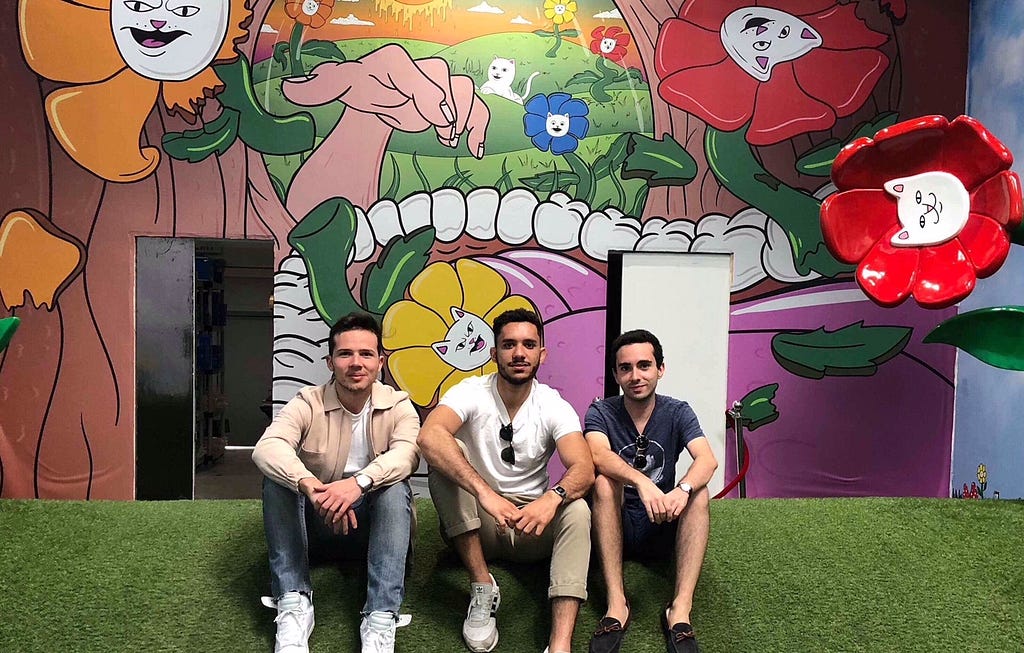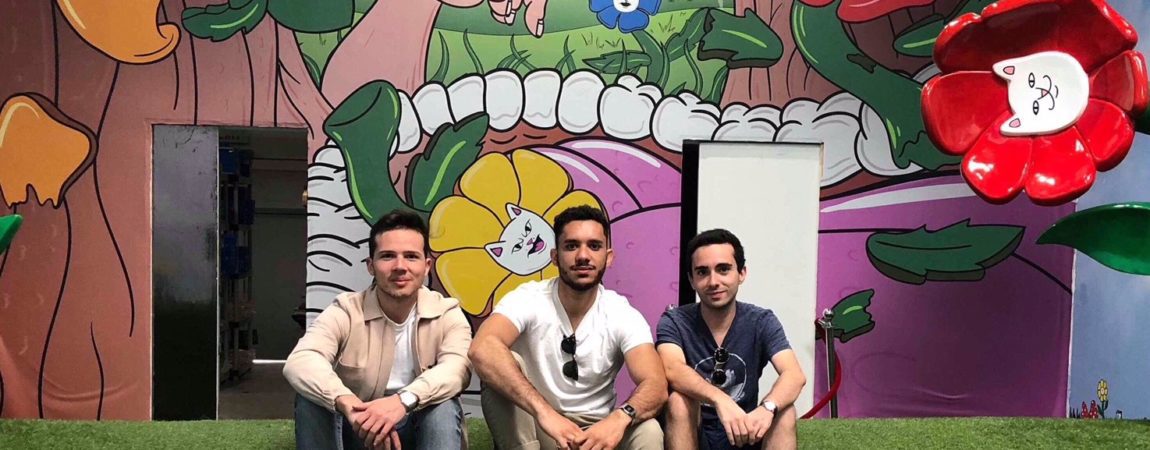By Pierre-Habté Nouvellon
Pierre-Habté grew up in very eclectic environment: his father is French, his mother Ethiopian, and he has lived in France, Congo, Brazil, and the US over the past 23 years.
How has navigating your diverse background been while at Berkeley?
The question of ‘where are you from?’ is not an easy one. At Berkeley however, people have such a diverse background that they understand that you can feel black/white and Latino at the same time!What made you decide to choose the Berkeley MEng program as opposed to other Engineering Master’s programs?
I wanted to use all the knowledge I gained in the last 21 years into something great that would benefit society. There were two conspicuous ways to yield the greatest impact: research, and entrepreneurship. No surprise: UC Berkeley was the best place for both of them!There were two conspicuous ways to yield the greatest impact: research, and entrepreneurship. No surprise: UC Berkeley was the best place for both of them!
What inspired you to take extra Computer Science and Machine Learning classes?
A whole new world of opportunities is provided by AI. I started to realize that within my Capstone Project, which was about predicting a skin disease called Psoriasis Arthritis using genotype and phenotype data.
The Beginning of Jenyai, the AI tutor
As part of a Machine Learning course project, Pierre-Habté started to work on an AI tutor project with two friends, Rédouane Ramdani and Anas Bouassami, who were visiting scholars at the Haas Business School. The three co-founders quickly started to develop the product and work with pilot schools around Berkeley and Oakland. Jenyai was able to answer the most common questions in Science, History, and Math at the 6th grade level. In February 2018, the team and their product got accepted into an accelerator in San Francisco called The Refiners. By this time, the project was growing: two developers had joined the team, Jenyai was available on Facebook messenger and Kik, and they had 5,000 daily active users. However, one question had yet to be answered: are people willing to pay for an AI tutor?How did you get involved with Jenyai?
During a casual coffee talk at Strada, Rédouane and Anas told me about their idea of creating the perfect tutor and school buddy bot that could answer students questions and coach them through positive thinking. Since I am passionate about education and Machine learning, I directly jumped into the project!Were there any challenges that you faced while working on the project?
Managing my time in between my startup, master courses, and my Capstone project was a real challenge. Since I was in charge of the Machine Learning part in the startup, I took all possible extra courses in that field: Deep learning, Computer Vision and Optimization. I ended up with twice the required number of credits for my master.What was the end result of the project?
In late March we received an email from YCombinator saying that we had been selected to pass an interview. Being in the top 400 selected startup among 9,000 applicants was already very encouraging. The interview went very well…but at the end of the day we received an email saying that we got denied. The jury was not sure about how we could monetize our AI tutor. The day after, we decided to pivot and focus our attention on the very one feature that was working very well and was bringing the most value to users: snips.The end of Jenyai… and the rise of Snipfeed
One very popular feature on Jenyai was the push of short news, facts, or quizzes for students (called snips), which were followed by snack lessons. From one snack lesson, students could go to another related snack lesson, where they would enter “a tree of knowledge” without realizing they were actually learning in the process. Meanwhile, this process takes place using GenZ social codes: emojis, videos and GIFs.How did you and your team members come up with the idea for Snipfeed?
Students were very curious and could spend more than 40 min just going deeper and deeper into the subject, if given in a snackable, fun and personalized way. The snack lessons would help them understand the news: give them context. People were not using Jenyai bot to do math exercises, but rather to get their news and learn things. We were quite surprised and asked our users where they usually get their news from. I was shocked when I realized that their #1 source of information/news was Instagram. The latter doesn’t provide the tools for deeper analysis or contextualization for their content which led to this fake news era. That is when we decided to create Snipfeed.We were quite surprised and asked our users where they usually get their news from. I was shocked when I realised that their #1 source of information/news was Instagram. The latter doesn’t provide the tools for deeper analysis or contextualization for their content which led to this fake news era.
Snipfeed, the startup that fights fake news
Snipfeed is a news and information recommendation engine based on AI and your go-to for everything that is important to you. You can test it on Facebook Messenger today: http://m.me/snipfeedapp. It provides daily and highly-personalized snippets for its users, and engages them in learning by breaking up original content into short chat messages, GIFs/Images, videos & quizzes.
Where do you see Snipfeed headed towards?
Our vision for Snipfeed in the future is to become the main medium for GenZ and millennials to get their news and raise awareness. Snipfeed is the missing piece in the puzzle between traditional media, influencers, and learning platforms. We also believe that Snipfeed can be the leading platform for critical thinking and debate as people will be able to share snips and create conversations over them as well as expressing their feelings anonymously through emoji polls.Snipfeed is the missing piece in the puzzle between traditional media, influencers, and learning platforms.The team has recently been announced as one of SkyDeck’s Fall 2018 Cohort teams. Congrats to Pierre and the members of Snipfeed!

The war against fake news: Insight from the CTO of Snipfeed was originally published in Berkeley Master of Engineering on Medium, where people are continuing the conversation by highlighting and responding to this story.


